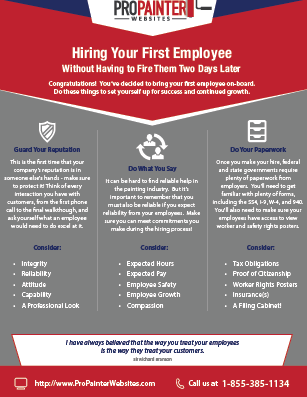Seasonal Considerations For Industrial Outside Painting: What You Need To Know
Seasonal Considerations For Industrial Outside Painting: What You Need To Know
Blog Article
Written By-Korsholm Decker
When you're intending a commercial exterior paint project, seasonal aspects can make or damage your outcomes. You'll intend to consider how temperature level and moisture effect paint application and drying times. Picking the ideal period can guarantee your paint adheres appropriately and lasts much longer. Yet which periods are really the most effective for this sort of job? Let's check out the crucial elements that can affect your project's success.
The Influence of Temperature on Paint Application
When you're preparing a commercial exterior paint task, the temperature level can substantially impact how well the paint sticks and dries out.
Preferably, you want to paint when temperatures range in between 50 ° F and 85 ° F. If Click To See More 's too cold, the paint might not heal appropriately, bring about problems like peeling or cracking.
On the flip side, if it's also warm, the paint can dry out as well quickly, protecting against proper bond and resulting in an unequal coating.
read this article ought to likewise think about the moment of day; morning or late afternoon uses cooler temperatures, which can be more beneficial.
Always examine the producer's suggestions for the certain paint you're using, as they frequently provide support on the perfect temperature level array for optimum results.
Humidity and Its Result on Drying Times
Temperature isn't the only ecological factor that influences your commercial exterior paint task; moisture plays a considerable duty as well. click this site can reduce drying times dramatically, impacting the general top quality of your paint task.
When the air is saturated with dampness, the paint takes longer to heal, which can lead to problems like poor bond and a greater danger of mildew development. If you're painting on an especially damp day, be gotten ready for prolonged delay times between coats.
It's crucial to keep an eye on regional weather conditions and strategy accordingly. Ideally, https://brooksdlsye.thekatyblog.com/33912210/check-out-the-means-to-access-reasonably-priced-paint-services-that-won-t-exceed-your-spending-plan-discover-the-approaches-that-can-lead-you-to-the-very-best-suitable-for-your-job for humidity levels in between 40% and 70% for optimal drying out.
Keeping these factors in mind ensures your job stays on track and provides an enduring coating.
Best Seasons for Commercial Outside Painting Projects
What's the very best time of year for your business exterior paint tasks?
Spring and early loss are commonly your best bets. Throughout these periods, temperature levels are moderate, and humidity degrees are often reduced, producing excellent problems for paint application and drying out.
Prevent summer's intense heat, which can create paint to completely dry as well swiftly, leading to poor bond and surface. Likewise, winter season's chilly temperatures can hinder appropriate drying out and healing, taking the chance of the longevity of your paint task.
Go for days with temperature levels in between 50 ° F and 85 ° F for optimal outcomes. Keep in mind to examine the regional weather forecast for rainfall, as wet conditions can spoil your job.
Planning around these elements guarantees your paint project runs smoothly and lasts much longer.
Final thought
In conclusion, intending your industrial outside painting projects around seasonal factors to consider can make a considerable difference in the end result. By scheduling work throughout the ideal temperature levels and moisture levels, you'll make sure better bond and drying out times. Remember to keep an eye on regional weather report and choose the correct time of year-- springtime and very early loss are your best choices. Taking these steps will certainly aid you attain a long lasting and specialist surface that lasts.
